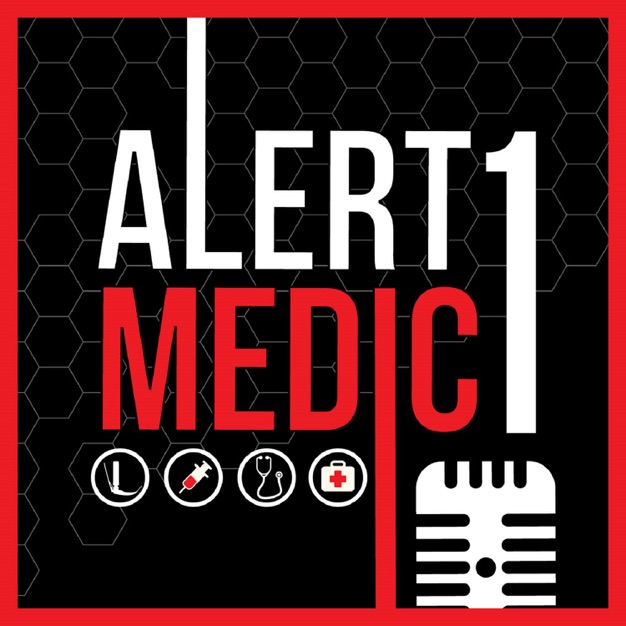
Alert Medic 1 - Podcast
Alert Medic 1
Alert Medic 1 is a website and podcast developed by EMS professionals with strict physician oversight focused on educating EMS providers on all aspects of the sciences and medicine. We accomplish our goal through blog entries, case studies, video lectures, and social media interaction. We encourage and welcome health care providers of all backgrounds to join in our discussion.
- 1 hour 5 minutesDiscussion on the EMS Compact w/ Donnie Woodyard
Summary
In this conversation, Mustafa Sidik interviews Donnie Woodyard about his extensive journey in Emergency Medical Services (EMS) and the significance of the EMS Compact. They discuss the origins and structure of the EMS Compact, its role in facilitating licensure and mobility for EMS personnel across states, and the importance of maintaining quality and competency in the field. The conversation also touches on the mental health challenges faced by EMS professionals and the potential for future research and improvements in the industry.
Takeaways
- The EMS Compact allows for easier licensure across states.
- Compacts are essential for standardizing practices in healthcare professions.
- The EMS Compact currently includes 24 states and covers about 400,000 personnel.
- Quality and competency are ensured through national standards and background checks.
- Concerns about the compact often stem from misinformation.
- The compact can improve recruitment and retention in EMS.
- Future research opportunities exist to study the impact of the EMS Compact.
- Mental health and safety protocols are crucial for EMS professionals.
- The EMS Compact aims to unify standards and improve public safety.
14 January 2025, 6:00 pm - 1 hour 2 minutesUtilization of Ventilators in Public-Safety EMS
Summary
In this episode, the hosts discuss the complexities and challenges of implementing mechanical ventilation in 911 settings. They explore the differences in training, the importance of proper rollout, and the need for individualized care based on patient populations. The conversation emphasizes the significance of understanding ventilator settings and their impact on patient outcomes, particularly in critical situations such as cardiac arrest and obstructive diseases. The hosts also highlight the concept of therapeutic momentum and the responsibility of pre-hospital providers to prevent lung injury.
Takeaways
- Ventilation training varies significantly across different services.
- Proper implementation and training are crucial for effective ventilation.
- Mechanical ventilation is a complex but necessary part of patient care.
- Understanding ventilator settings can prevent complications in patients.
- Cookie cutter protocols may not be suitable for all patients.
- Different patient populations require tailored ventilation strategies.
- Therapeutic momentum can influence patient outcomes significantly.
- Ventilators should be seen as tools to enhance patient care, not just equipment.
- Pre-hospital providers have a responsibility to prevent lung injury.
- Effective communication and training are essential for successful ventilator use.
7 January 2025, 6:00 pm - 54 minutes 27 secondsThe Critical Care Mindset
Summary
In this episode of the Alert Medical One podcast, hosts Cody and Josh engage with Steve, a critical care medic with a military background. They explore the intersection of military and civilian medical practices, emphasizing the importance of creativity, clinical thinking, and the desire to tackle challenging patient cases. Steve shares insights on the significance of community and mentorship in medical training, as well as the mindset required for success in high-pressure environments. The conversation highlights the need for intentionality in career development and the value of seeking out opportunities for growth. Takeaways
- The skills from military training can enhance civilian medical practice.
- Creativity in medicine is essential for effective patient care.
- Clinical thinking should adapt to individual patient needs.
- Seeking out challenging cases can lead to professional growth.
- Community and connection are vital in medical training.
- Success in medicine requires intentionality and goal-setting.
- Mentorship plays a crucial role in professional development.
- Every decision in a medical career shapes your identity.
- You must actively seek opportunities for advancement in your career.
Keywords
medical podcast, critical care, military medicine, creativity in medicine, EMS training, patient care, mentorship, medical community, flight medic, resilience
31 December 2024, 6:00 pm - 1 hour 21 minutesFundamentals of Mobile-Integrated Health Systems w/ Brenden Hayden
Summary
In this conversation, Brenden F Hayden shares his extensive journey in Emergency Medical Services (EMS), highlighting the importance of education, mental health, and the evolution of Mobile Integrated Health (MIH). He discusses the challenges and opportunities within the EMS field, including the need for regulatory changes and financial sustainability. The conversation emphasizes the value of collaboration and the necessity of supporting EMS providers' mental health. Brenden also touches on his role in the National EMS Advisory Council (NEMSAC) and the impact of innovative healthcare models on patient care.
Takeaways
- Education is crucial for EMS professionals to advance in their careers and improve patient care.
- Mental health support is essential for EMS providers to prevent burnout and promote wellness.
- Mobile Integrated Health (MIH) represents a shift towards proactive patient care in the community.
- Understanding the financial landscape is key to sustaining MIH programs and improving patient outcomes.
- Regulatory challenges can hinder the growth of MIH programs, requiring advocacy for change.
- NEMSAC plays a vital role in shaping EMS policy and addressing industry challenges.
- Collaboration among EMS professionals is necessary to drive innovation and improve care delivery.
- The healthcare system must adapt to provide care in patients' homes, especially for underserved communities.
- Peer-to-peer support programs are valuable for maintaining the mental health of EMS providers.
24 December 2024, 6:00 pm - 44 minutes 30 secondsTransitioning from Paramedic to Emergency Physician w/ Kyle Fratta, DO
Summary
In this conversation, Dr. Kyle Fratta shares his journey from being a paramedic to pursuing a career in medicine, highlighting the importance of education and the transition from paramedic training to medical school. He discusses the role of education in EMS, the significance of fellowships, and the innovative practices shaping the future of EMS, such as whole blood transfusions and the integration of ultrasound. The conversation emphasizes the need for a differential diagnosis mindset in EMS and the importance of community health initiatives to prevent emergencies.
Takeaways
The transition from paramedic to physician is significant and rewarding.
Medical education provides a comprehensive foundation for EMS leadership.
Whole blood transfusions are a game changer in emergency medicine.
Community health initiatives can prevent emergencies before they occur.
Differential diagnosis is crucial for effective patient care in EMS.
Education and continuous learning are vital in the medical field.
Fellowships provide essential training for future medical directors.
Innovations like ultrasound will enhance pre-hospital care.
Understanding the nuances of patient presentations is key for EMS providers.
Collaboration with blood banks is essential for implementing whole blood programs.
Keywords
paramedic, medical school, EMS, education, fellowship, whole blood, innovations, community health, differential diagnosis, emergency medicine
16 December 2024, 6:00 pm - 58 minutes 22 secondsThe Shock Trauma Go-Team, and other Topics in Trauma Medicine w/ Rishi Kundi, MD
Summary
In this conversation, Dr. Rishi Kundi discusses his journey into trauma surgery and the pivotal role of the Shock Trauma Center in Maryland. He elaborates on the evolution and function of the GO Team, a specialized unit that provides advanced medical care in the field. The discussion highlights the importance of collaboration between EMS and the GO Team, the challenges of existing protocols, and the future directions for trauma care. The conversation emphasizes the need for effective communication and documentation in trauma situations, as well as the GO Team's commitment to being a valuable resource for EMS providers.
Takeaways
Dr. Kundi transitioned from vascular surgery to trauma surgery for a more trauma-heavy practice.
The Shock Trauma Center serves as the primary adult resource center for Maryland.
The GO Team evolved from informal responses to a structured, volunteer-based system.
The GO Team can perform critical interventions in the field, including resuscitation and pain management.
Collaboration between EMS and the GO Team is essential for optimal patient care.
Protocols for blood administration in the field are evolving, with potential for statewide changes.
Effective communication and handoffs are crucial in trauma care.
Documentation of consultations and interventions is vital for legal and medical accountability.
The GO Team is open to being called for various situations, not just severe entrapments.
Future advancements may include remote cannulation and new medical devices for trauma care.
Keywords
trauma surgery, Shock Trauma Center, GO Team, EMS, patient care, blood administration, trauma systems, communication, handoffs, medical protocols
9 December 2024, 6:00 pm - 1 hour 23 minutesTopics in EMS w/ EMS CAST Hosts Ross Orpet, MD, NRP & Will Berry, FP-C, NRP
Summary
In this episode, the Alert Medic 1 team engage with the dynamic duo from EMS CAST, discussing their journeys into emergency medicine and the importance of communication, mentorship, and learning from mistakes in the field. They emphasize the need for effective communication between paramedics and physicians, the significance of building a shared mental model during patient care, and the value of continuous education and self-improvement. The conversation also touches on the responsibility of educators in the EMS field and the potential for innovation through podcasting and other platforms.
Takeaways
- The journey into EMS often begins with a passion for helping others.
- Effective communication is crucial in emergency medical situations.
- Building a shared mental model enhances teamwork and patient care.
- Learning from mistakes is essential for personal and professional growth.
- Podcasts can serve as a valuable tool for education and knowledge sharing in EMS.
- Mentorship plays a significant role in developing skills and confidence in paramedics.
- Asking questions is a sign of strength, not weakness.
- Understanding protocols is vital for safe and effective patient care.
- Innovating in EMS education requires collaboration and open dialogue.
- The EMS community is evolving, and there's a need for continuous improvement and adaptation.
Chapters
00:00 Introduction and Guest Introductions
09:59 Realizing the Need for More Knowledge Beyond Protocols
19:55 Speaking the Language of Physicians and Establishing a Shared Mental Model
26:13 The Importance of Open Communication and Teamwork
34:16 Challenging Misconceptions and Seeking Feedback
43:13 The Importance of Humility and Continuous Learning
45:02 Innovating Podcasting for Effective Education
47:42 The Need for Evidence-Based Research in Pre-Hospital Medicine
50:32 Creating a Culture of Transparency and Learning from Mistakes
53:22 The Role of Leadership in Fostering a Supportive and Educational Environment
2 December 2024, 6:00 pm - 1 hour 42 minutesCurrent Trends in the Management of Traumatic Cardiac Arrest w/ Zaffer Qasim, MD
Summary
In this episode, the hosts discuss the current challenges faced by healthcare professionals, particularly in trauma care. They highlight recent incidents involving assaults on medical staff and the need for stricter penalties for such actions. The conversation shifts to the management of traumatic cardiac arrest, introducing the HOT algorithm, which emphasizes the importance of addressing hypovolemia, oxygenation, and tension physiology. The hosts also explore the cultural aspects of trauma care, particularly the instinct to perform compressions, and the importance of hemorrhage control techniques, including the use of pelvic binders and TXA. They conclude by emphasizing the need for individualized care in trauma situations and the evolving understanding of fluid resuscitation. In this conversation, the speakers discuss advancements in trauma care, focusing on the administration of TXA and calcium, the importance of access strategies in resuscitation, and the evolving approach to airway management. They explore the nuances of treating obstructive shock and the potential of non-invasive solutions like junctional tourniquets. The discussion emphasizes the need for a paradigm shift in trauma resuscitation strategies to improve patient outcomes.
Takeaways
- Healthcare professionals face significant risks on the front lines.
- Traumatic cardiac arrest management requires a different approach than medical cardiac arrest.
- The HOT algorithm focuses on key reversible causes in trauma patients.
- Cultural norms influence the instinct to perform compressions in trauma cases.
- Hemorrhage control is critical in trauma management.
- Pelvic binders should be used more frequently in trauma situations.
- TXA is essential in managing shock patients effectively.
- Fluid resuscitation strategies must be individualized based on patient needs.
- Understanding the physiology of trauma is crucial for effective treatment.
- The medical community must adapt to new research and evidence in trauma care. The administration of TXA and calcium can significantly impact trauma care.
- Logistical challenges in IV access can be mitigated by using IO access.
- Basic airway maneuvers should be prioritized over advanced intubation in trauma cases.
- Needle decompression techniques need to be re-evaluated for effectiveness.
- Open-thoracostomy may provide better outcomes than traditional needle decompression.
- Non-invasive junctional tourniquets can be a viable option in trauma settings.
- Understanding cardiac rhythms can guide resuscitation efforts in trauma patients.
- Rethinking trauma protocols can reduce preventable deaths in emergency situations.
- The importance of early volume restoration in trauma resuscitation cannot be overstated.
- Collaboration and continuous education are key to improving trauma care practices.
Chapters
00:00 Introduction and Context of Trauma in Healthcare
03:29 The Dangers Faced by Healthcare Workers
06:27 New Research on Traumatic Cardiac Arrest
09:34 Understanding Traumatic Arrest Management
12:26 The Role of Compressions in Traumatic Arrest
15:38 Cultural Challenges in Emergency Response
18:43 Hemorrhage Control and Pelvic Binders
21:43 The Importance of Reversible Causes in Trauma
24:22 Evolving Practices in Trauma Care
27:41 Final Thoughts on Trauma Management
38:55 The Debate on Fluid Resuscitation
41:43 Understanding Systolic Blood Pressure in Trauma
46:06 The Role of TXA and Calcium in Trauma Care
58:13 Access Techniques in Pre-Hospital Settings
01:09:48 Fluid Resuscitation Challenges
01:15:08 Airway Management in Trauma
01:22:00 Understanding Obstructive Shock Pathology
01:30:48 Exploring External Abdominal Constriction Devices
01:39:35 The Importance of Cardiac Rhythm in Trauma
01:43:25 Rethinking Trauma Patient Management
28 November 2024, 6:00 pm - 1 hour 14 minutesSepsis Fundamentals with Michael Winters, MD
Summary
In this conversation, Mustafa Sidik and Dr. Mike Winters delve into the complexities of sepsis, discussing its definitions, sources, symptoms, and treatment strategies. Dr. Winters shares his extensive experience in emergency medicine and emphasizes the importance of early recognition and appropriate management of sepsis. The discussion covers the pathophysiology of sepsis, the role of lactate in assessing severity, and the various scoring systems used to identify septic patients. They also highlight the significance of clinical judgment over standardized scoring systems and explore the future of sepsis treatment through phenotyping.
Takeaways
- Sepsis is defined as life-threatening organ dysfunction due to infection.
- The lung is the most common source of sepsis, followed by genitourinary and intra-abdominal sources.
- Tachypnea is a critical sign of sepsis and correlates with poor outcomes.
- Early administration of antibiotics is crucial in septic shock cases.
- Fluid resuscitation should be tailored to the patient's condition, especially in cases of hypoperfusion.
- Lactate levels are important indicators of sepsis severity and mortality risk.
- Current sepsis scoring systems have limitations and should not replace clinical judgment.
- Sepsis phenotyping may lead to more individualized treatment approaches in the future.
- Understanding the pathophysiology of sepsis helps in better management and education.
- Continuous education and awareness are key to improving outcomes in sepsis management.
Chapters
- 00:00 Introduction to Sepsis and Guest Background
- 03:46 Journey into Medicine and Emergency Care
- 06:32 Understanding Sepsis: Definitions and Criteria
- 09:43 Sources of Sepsis: Top Five Locations
- 12:33 Pathophysiology of Sepsis: From Localized Infection to Systemic Response
- 18:33 SIRS Criteria and Its Implications
- 20:53 Symptoms of Sepsis: Fever, Tachycardia, and More
- 27:56 Lactate Levels and Their Significance
- 30:59 Sepsis Scoring Systems: SOFA, QSOFA, and More
- 35:47 Treatment Approaches: Fluids, Antibiotics, and Vasopressors
- 44:46 Fluid Resuscitation: Guidelines and Considerations
- 52:53 Sepsis Phenotyping: The Future of Treatment
- 01:06:45 Closing Thoughts on Sepsis Management
Early Physician Gestalt Versus Usual Screening Tools for the Prediction of Sepsis in Critically Ill Emergency Patients: https://pubmed.ncbi.nlm.nih.gov/38530675/
18 November 2024, 6:00 pm - 56 minutes 29 secondsJournal Club: Analysis of the INTERACT4 Trial w/ Jim Brady, DO
Keywords: prehospital care, stroke management, blood pressure control, INTERACT4, emergency medicine, ischemic stroke, hemorrhagic stroke, clinical research, medical literature, EMS
Summary: In this conversation, Mustafa Sidik and James Brady discuss the INTERACT4 trial, which investigates blood pressure management in pre-hospital settings for stroke patients. They explore the trial's methodology, results, and implications for clinical practice, emphasizing the need for ongoing research and the importance of understanding the differences between ischemic and hemorrhagic strokes. The discussion also highlights the strengths and weaknesses of the study, the significance of negative findings, and the necessity for better diagnostic tools in emergency medicine.takeaways
- Pre-hospital providers need to stay updated on current literature.
- The INTERACT4 trial focused on blood pressure control in stroke patients.
- No significant difference was found in outcomes between treatment groups.
- The odds ratio of 1.0 indicates no effect of the intervention.
- Blood pressure management varies significantly between ischemic and hemorrhagic strokes.
- Negative research findings can provide valuable insights.
- Generalizability of research is crucial for clinical application.
- The study's high percentage of hemorrhagic strokes raises questions about its applicability in other regions.
- Future research should focus on improving diagnostic tools for stroke.
- Effective blood pressure management is essential for optimizing patient outcomes.
11 November 2024, 6:00 pm - 1 hour 51 secondsToxicology Fundamentals with Andrew Stolbach, MD
In this conversation, Mustafa Sidik interviews Dr. Andrew Stolbach, an emergency physician and medical toxicologist, to discuss the fundamentals of toxicology, including definitions, toxidromes, and management strategies for various overdoses. They explore the mechanisms of common antidotes like naloxone, sodium bicarbonate, and glucagon, emphasizing the importance of treating the patient rather than just the poison. The discussion highlights the complexities of toxicology in emergency medicine and the critical role of understanding symptoms and treatment protocols.
Takeaways
Toxicology focuses on treating poisonings and overdoses.
The dose of a substance determines its toxicity.
Toxidromes are key in identifying specific overdoses.
Cholinergic and anticholinergic toxidromes present opposite symptoms.
Sympathomimetic toxidromes are often caused by stimulants like cocaine.
Benzodiazepines are crucial in managing sympathomimetic overdoses.
Opioid overdoses can lead to respiratory failure.
Naloxone is an effective antidote for opioid overdoses.
Sodium bicarbonate is used in TCA overdoses to normalize EKG findings.
Glucagon can be used in beta blocker overdoses to bypass receptor blockage.
Keywords
toxicology, toxidromes, overdose management, medical toxicology, emergency medicine, naloxone, sedative hypnotics, opioid epidemic, glucagon, sodium bicarbonate
Link to Naloxone and Patient Outcomes in Out-of-Hospital Cardiac Arrests in California: https://jamanetwork.com/journals/jamanetworkopen/fullarticle/2822449
4 November 2024, 6:25 pm - More Episodes? Get the App
Your feedback is valuable to us. Should you encounter any bugs, glitches, lack of functionality or other problems, please email us on [email protected] or join Moon.FM Telegram Group where you can talk directly to the dev team who are happy to answer any queries.
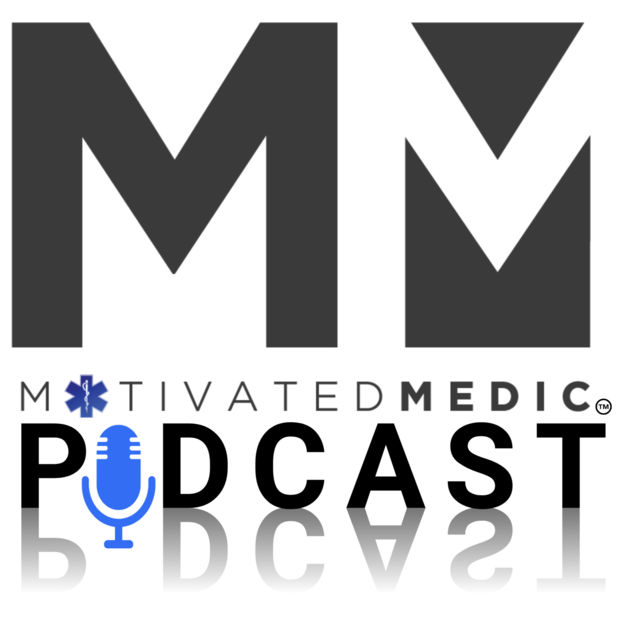 Motivated Medic Podcast
Motivated Medic Podcast
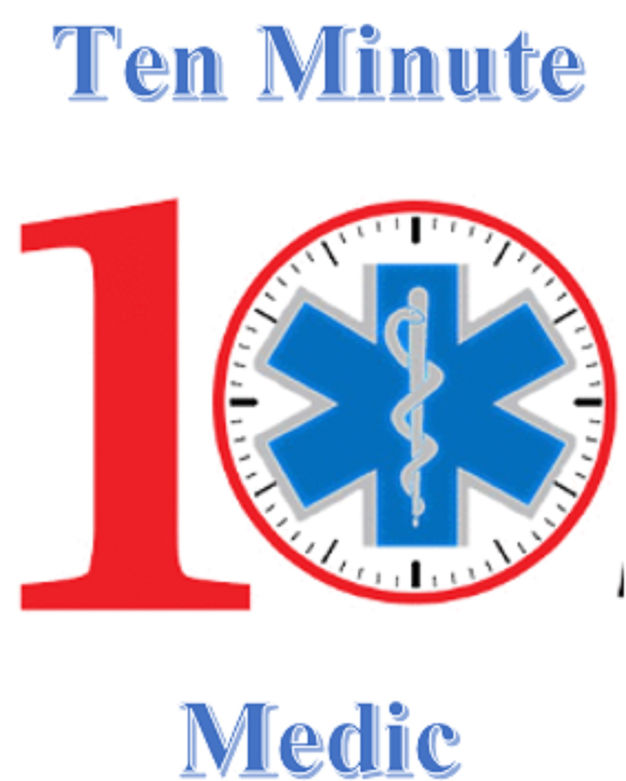 Ten Minute Medic
Ten Minute Medic
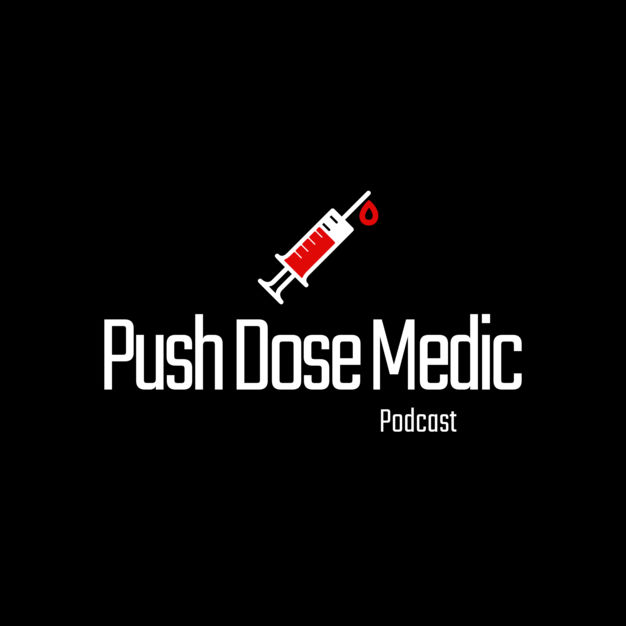 Push Dose Medic Podcast
Push Dose Medic Podcast
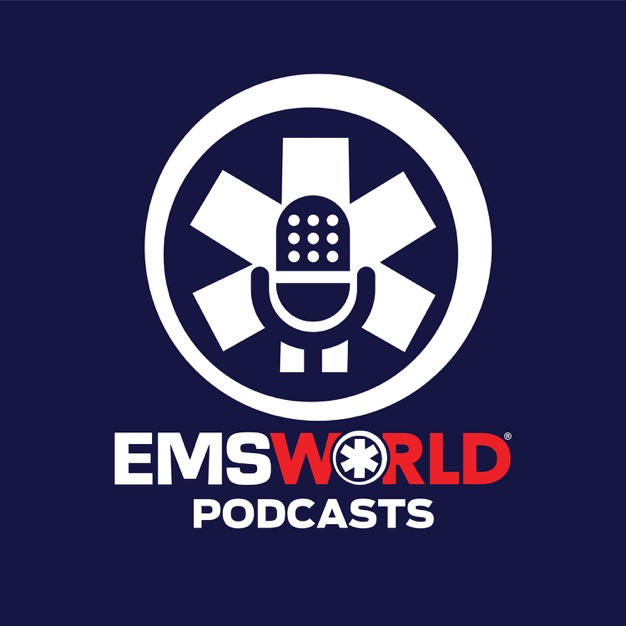 EMS World Podcasts
EMS World Podcasts
 Pragmatic Paramedics
Pragmatic Paramedics